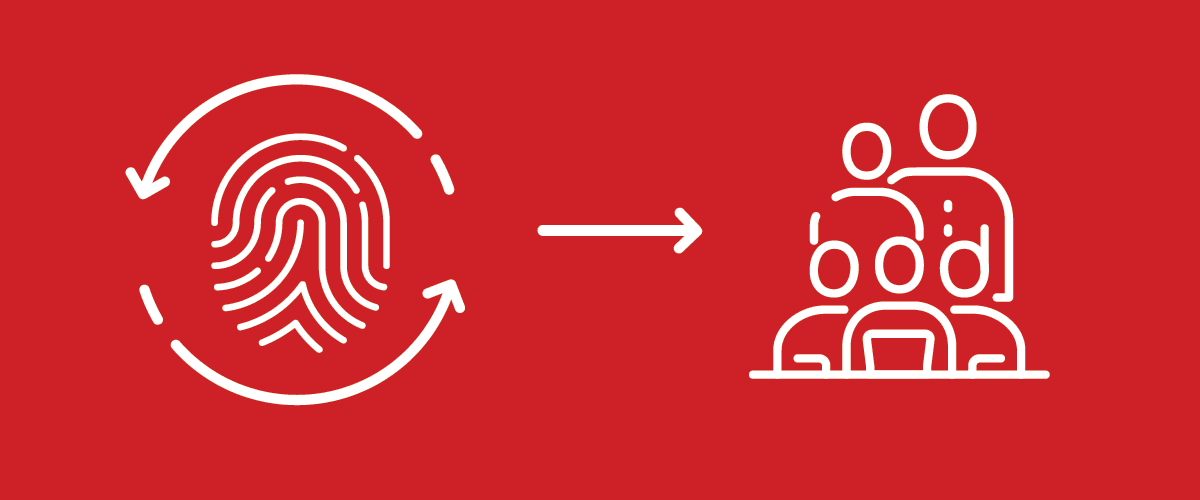When your employees fail to understand your brand identity, it is nearly impossible to communicate it effectively to your consumers
Establishing a strong brand identity is like building a healthy relationship – you have to believe in yourself before anyone else can do the same. However, getting your sales team, customer service team and every other department on the same page can easily become an uphill battle. When your employees fail to understand your brand identity, it is nearly impossible to communicate it effectively to your consumers.
To make matters worse, it only takes a single slip-up to lose your customers forever. A simple disconnect between your stated values and the way you do business can quickly diminish credibility.
It is the butterfly effect of marketing. Even if your product is leagues better than the competition, your target consumers will flock to companies with missions that elevate their services and complement their values.
Avoid the identity crisis
No business is immune to an identity crisis. Take McDonald’s, for instance. The fast-food giant has come a long way from plastic booths and tile flooring, but these aesthetic shifts are simply bandages for a bigger problem – employee relations.
Yes, the self-ordering kiosks separate disgruntled workers from customers, but they do little to mitigate the company’s reputation for poor treatment of employees.
McDonald’s seems to be competing with its former subsidiary Chipotle by incorporating fresh meat and a more nuanced customer experience into its business model. But if the company wants to reverse years of subpar investment results and dismissive press coverage, it needs to do more than replace cashiers with machines.

Now, the McDonald’s scenario is an extreme example of an identity crisis. These crises often come in subtler shades, challenging you to pinpoint how you are losing sight of your consumers.
Regardless of the cause, shaky market share is a telltale sign that an overhaul is in order. Apple successfully rebranded to regain market share from Dell and HP, and more recently, the company started placing a greater emphasis on community in its brick-and-mortar locations to compete with e-commerce sites. When Harley-Davidson started to slip into irrelevance, it embraced its retro status and separated its brand from those offering cutting-edge motorcycles.
Perhaps your target audience has changed. Consider Old Spice: Its brand was primarily aimed at older consumers before that customer base started shrinking. The company had no choice but to target younger generations to maintain its market share. Now, with a successful brand update, its customer base is growing.
Sometimes, though, a major red flag may not be external. For example, if you are pivoting your business model, your brand has to pivot with it. Your previous values, mission, and goals may have been perfect, but they will not coincide with your new paradigm. For example, after Nike began developing its own shoes, it could no longer position itself as a distributor, seeing as that image did not align with its new status.

4 ways to regain your brand’s identity
Given the variety of ways you can tarnish your brand identity, there is no one formula to correct the flaws in your company’s image. Fortunately, there are some concrete steps any marketing leader can take to avoid the most common pitfalls.
Revisit your mission
With everything that is on your plate, it can be easy to lose sight of your company’s primary objectives and getting back on track is a systemic challenge. As different as each of their roles is, every department lead needs to work toward the same goals and values.
It sounds simple but the most effective remedy is to meet with each of those leads individually. Tell them you are conducting a brand assessment and that you value their input. Avoid reading from the same, generic list of questions for every leader. Instead, tailor your interviews to each department to get an accurate range of perspectives.
Otherwise, you may end up with a rebrand that creates a more formidable wall between you and your consumers. After Uber’s data breach controversy, the company created a new logo to re-establish trust with its customers. Yet, two years later, the company is still running apology ads. As a result, when you are considering a rebrand, make sure it reflects what you stand for rather than relying on hollow visual cues.
Perform a SWOT analysis
Understanding your organization’s values is great, but determining how to rebrand is where the real work begins. A SWOT analysis – as rudimentary as it is – builds the foundation of a brand update. By forcing you to examine the strengths, weaknesses, opportunities and threats facing your business, this tool gives you an objective look at what you are missing.
To maximize the analysis’ potential, avoid doing it alone at your desk like you’re making a pros and cons list. Enlist the help of your entire team, as your brand’s missing ingredient may be found where you least expect it. As tough as it seems, encourage everyone to be brutally honest. Only then will you realize the makeover your brand needs.
Develop a marketing SWAT team
Not to be confused with a SWOT analysis, a marketing SWAT team will start putting your rebranding plans into action. The key difference in this step, though, is that you are not collaborating with as many people as possible. Limit the group to five people and have each member specialize in a particular area.
Mobilize your most creative employees to develop the rebranding idea and reserve the more technical tasks for data analytics and publishing experts. This way, you can strategize each step of the rebrand within a small, manageable team.

Involve your customers
Despite the meetings, analyses and brainstorming sessions, you never know whether your rebranding strategy will work until you test it with your customers. Thankfully, you can find out before your new strategy becomes official.
Do some research to determine your most effective brand ambassadors. These customers are the most vocal supporters of your product and because they are connected to the outside world, they may provide the most valuable insights into your new strategy.
Pitch them your ideas the same way you solicit feedback from your teams: Ask specific, open-ended questions. Discover what they like about your brand, why they come back to you instead of going over to the competition and what positive and negative experiences they have had. After all, you are not trying to sell them on a new idea – you are testing to see what works.
If these red flags and strategies come as a shock, all is not lost. You still have time to right the brand identity ship before it sinks. However, if you wait too long, and your customers move on to a more effectively marketed brand, recapturing their loyalty is a long shot. But as a marketing leader, you have all the necessary tools at your disposal – you just have to be smart about how you use them.
